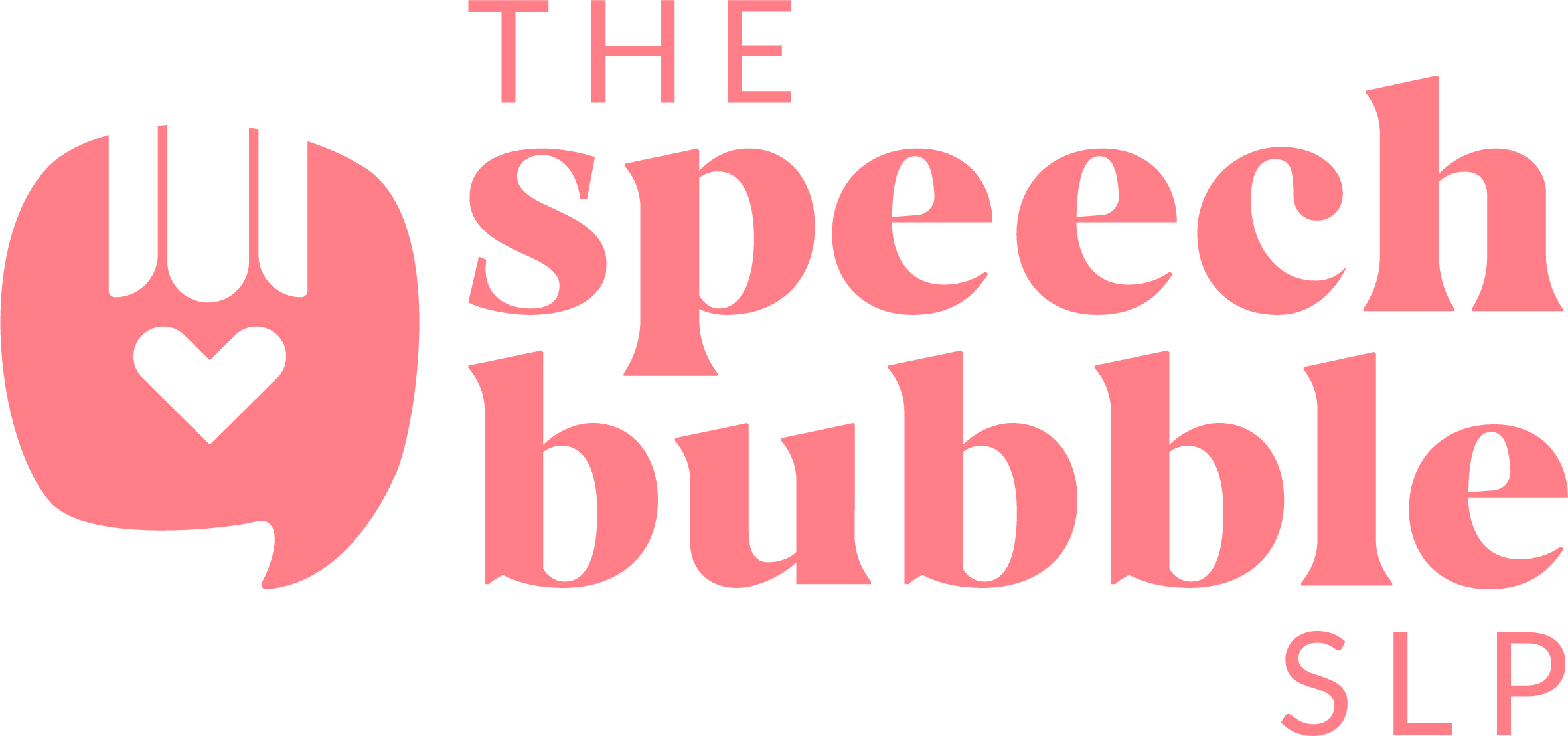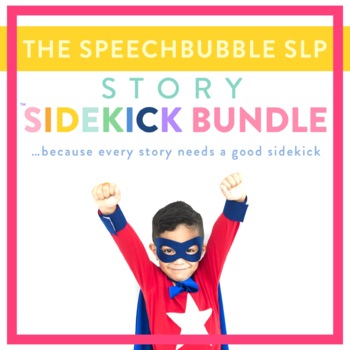Today I am excited to share with you a special guest post from Smart Speech Therapy, LLC. This post is loaded with with informative and helpful information to help you and your students.
How to Successfully Address Client’s Inattention, Impulsivity, and Hyperactivity in Therapy Sessions
In recent years, with the ‘back to district trend’ sweeping our schools, more and more speech language pathologists find themselves working with children who present with behavioral deficits in conjunction with speech-language delays and impairments. A significant portion of work with these children in therapy involves successful management of a number of behavioral difficulties, which often interfere with successful objective completion and goal attainment. Today I will be offering some suggestions regarding how speech pathologists can improve their ability to successfully manage behavior of children with inattention, hyperactivity and impulsivity in therapy sessions. Notice, I do not use the term ADHD or Attention Deficit Hyperactivity Disorder to refer to these symptoms. That is because not every child who presents with these symptoms has ADHD. In my previous posts and downloads, I have went over in considerable detail how children with a wide variety of disorders and diagnoses (e.g., Traumatic Brain Injury (TBI), Sensory Processing Disorder (SPD), Auditory Processing Disorder (APD) can present with symptoms of inattention, hyperactivity and impulsivity. For the purpose of this post, I will be focusing not on a specific diagnosis but on how to address the above symptoms via a number of modification techniques aimed at managing interfering behaviors. These techniques include modifications of: physical space, session structure, session materials as well as child’s behavior.
Physical Space Modifications: This involves setting up the therapy room to eliminate visual distractions, making sure that the space is free of material clutter. You’ll also want to eliminate any unnecessary auditory distractions (e.g., noise from an air conditioner/heater) as well as modify the child’s seating arrangements. Have the child face a wall vs. the window and if the child is in a group, the therapist may want to sit in close proximity to the child to provide him/her with visual (gestural) or tactile (shoulder touch) reminders to attend to task.
Session Structure Modifications: There are a number of structural modifications that therapists can make in sessions. For starters you can use written/picture rules to clarify expectations. If you do, try to keep the language positive vs. negative (e.g., ‘keep your hands neat’ vs. ‘no touching’, ‘speak softly’ vs. ‘no yelling’). You can use written schedules to establish routines and identify order of activities for the students. Use of timers will specify activity length and facilitate transitions, while several changes of activities (e.g., +/- 3 per 60 minute session depending on the child’s attention span) will help to reduce fatigue and frustration. A simple seat modification may significantly reduce hyperactivity and impulsivity. Placing the child on a therapy ball, disco seat, wedge cushion, or a zuma rocker may allow for better trunk positioning as well as trunk stability for some while allowing others to fidget “appropriately” in their seat. Don’t be afraid to offer the students some handheld sensory manipulatives in sessions to squeeze or shake. Allow a few minutes for sensory breaks when the kids could move for 2-3 minutes to music or do some jumping jacks. You may also wish to take a look at the Infinity Walk (developed by Dr. Sunbeck) to determine whether you want to trial it with some of your clients.
Session Materials Modifications: When deciding on the complexity of selected materials you should consider the client’s maintaining factors, or those factors which may maintain the disorder and delay therapy progress (Klein & Moses, 1999). These include: cognitive, sensorimotor, psychosocial or linguistic deficits. If a child has deficits in any or all of the above areas the speech therapist must compensate for it in therapy or limited progress will be made in achieving the potential goals of therapy. Maintaining Factors (Klein & Moses, 1999):
- Cognitive includes intellectual disability, deficits in the areas of attention and memory as well as deficits in the areas of abstract concepts comprehension and problem solving.
- Sensorimotor: Deficits in the areas of the senses including but not limited to auditory processing and listening comprehension, tactile defensiveness (e.g., articulation) as well as gross (e.g., poor posture) and fine motor (e.g., poor pencil grasp) difficulties.
- Psychosocial: Deficits in the areas of adaptive behavior, pragmatics, and social cognition. Children diagnosed with emotional and behavioral disturbances including attention and behavior disorders, mood disorders as well as anxiety disorders will fall into in this category.
- Linguistic: This refers to the extent of the child’s linguistic deficits and their impact on the child’s overall functioning. Here we would compare the child’s language abilities/testing performance with that of age-level peers in order to determine the difference in functioning (e.g., how many standard deviations below the mean are the testing scores?) as well as in which areas of language is the functioning the most impaired (e.g., immature vocabulary, short sentence length, word retrieval, etc)?
Modifying Child’s Behavior: There is a number of ways in which this could be accomplished. For starters try to incorporate the student’s interests into therapy activities. Depending on the extent of the child’s deficits you’ll also want to vary the types and levels of cues you use in therapy (e.g., phonemic, tactile, written, gestural). To allow the student greater control in sessions, offer one of the two predetermined choices of activities. However, make sure not to offer more than two choices at a time in order to avoid unnecessary vacillation (taking too long when deciding what to do). For severely impaired children, look into errorless learning, a method which involves the use of most-to-least prompts in order to elicit correct responses (this is typically followed by less prompted trials until the child demonstrates mastery of the skill). Try to incorporate known information when teaching new tasks in order not to increase complexity too rapidly and don’t forget to have the child create a list of predetermined strategies such as what they can say to the therapist when they are having trouble while working on a task. If you have implemented the discussed modifications and the undesirable behaviors continue to escalate, consider reducing the session complexity. For example, perhaps you can do easier activities. This will allow you to still have a therapy session vs. having no session and returning the child to the classroom, or terminating the session early due to noncompliance.
In cases when behaviors are very extreme (aggression, withdrawal, etc) try build the child’s tolerance in small time increments (e.g., it will be 5 more minutes, one more activity before the end of session). To increase self esteem, catch the child “being good” and praise for specific vs. general positive behaviors such as staying on task or completing an activity (e.g., “Great job on reading that page all by yourself!”). Don’t forget that cause/effect reward charts serve as significant motivators for compliance in therapy. The last thought regarding behavior management that I wanted to leave you with is the importance of consistency. Whichever behavior modification suggestions you are implementing, remember to be consistent with the execution and follow through, across all settings and people, in order to optimize intervention results and achieve your desired therapy goals. For more detailed information on “Behavior Management Strategies for Speech Language Pathologists” click HERE. To download my Freebie: “Strategies of Asking for Help in Sessions”, click HERE. References:
- Brooks, A (1991) Behavior Problems and the Power Relationship. Language, Speech, and Hearing Services in Schools, (22), 89-91.
- Carr, E. G., et al (1994). Communication-based intervention for problem behavior: A user’s guide for producing positive change. Baltimore, MD: Paul H. Brooks.
- Currie, P. S., Melville, G. A., & Stiegler, L. N. (1997). Behavior management strategies for clinical or educational settings. The Clinical Connection, 10(1), 18-22.
- Hodgdon, L. (1995). “Visual Strategies for Improving Communication”. Michigan: Quirk Roberts Publishing.
- Klein, H., & Moses, N. (1999). Intervention planning for children with communication disorders: A guide to the clinical practicum and professional practice.(2nd Ed.). Boston, MA.: Allyn & Bacon.
- Johnston, S and Reichle, J (1993) Language and Social Skills in the School-Age Population: Designing and Implementing Interventions to Decrease Challenging Behavior. Language, Speech, and Hearing Services in Schools, (24), 225-235.
- Savner, J., & Myles, B. (2000). “Making Visual Supports Work in the Home and Community”. Kansas: Autism Asperger Publishing Co.



















